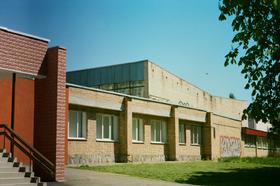For the 2025-26 school year, there are 2 public elementary schools serving 956 students in Fair Haven, NJ.
The top ranked public elementary schools in Fair Haven, NJ are Viola L Sickles School and Knollwood School. Overall testing rank is based on a school's combined math and reading proficiency test score ranking.
Fair Haven, NJ public elementary schools have an average math proficiency score of 78% (versus the New Jersey public elementary school average of 39%), and reading proficiency score of 81% (versus the 49% statewide average). Elementary schools in Fair Haven have an average ranking of 10/10, which is in the top 5% of New Jersey public elementary schools.
Minority enrollment is 5% of the student body (majority Hispanic), which is less than the New Jersey public elementary school average of 63% (majority Hispanic).
Best Public Elementary Schools in Fair Haven, NJ (2025-26)
School
(Math and Reading Proficiency)
(Math and Reading Proficiency)
Location
Quick Facts
Rank: #11.
Viola L Sickles School
(Math: 80-84% | Reading: 80-84%)
Rank:
Rank:
10/
Top 5%10
25 Willow Street
Fair Haven, NJ 07704
(732) 741-6151
Fair Haven, NJ 07704
(732) 741-6151
Gr: PK-3 | 452 students Student-teacher ratio: 11:1 Minority enrollment: 6%
Rank: #22.
Knollwood School
(Math: 77% | Reading: 81%)
Rank:
Rank:
10/
Top 5%10
224 Hance Road
Fair Haven, NJ 07704
(732) 747-0320
Fair Haven, NJ 07704
(732) 747-0320
Gr: 4-8 | 504 students Student-teacher ratio: 8:1 Minority enrollment: 5%
Frequently Asked Questions
What are the top ranked public elementary schools in Fair Haven, NJ?
The top ranked public elementary schools in Fair Haven, NJ include Viola L Sickles School and Knollwood School.
How many public elementary schools are located in Fair Haven?
2 public elementary schools are located in Fair Haven.
What is the racial composition of students in Fair Haven?
Fair Haven public elementary schools minority enrollment is 5% of the student body (majority Hispanic), which is less than the New Jersey public elementary schools average of 63% (majority Hispanic).
Recent Articles

Texas Schools Enrollment Trends & Policy in 2025
Latest data and policy changes on Texas public school enrollment growth, funding, and virtual education in 2025.

Financial Aid & Hidden Costs in Public Schools
Learn about financial aid and hidden costs in public schools. Discover what parents should budget for beyond tuition-free education.

NYC Schools Still Most Segregated in 2025
Despite reforms, New York City schools remain the most segregated in the U.S. in 2025. Here鈥檚 what parents and educators need to know.
